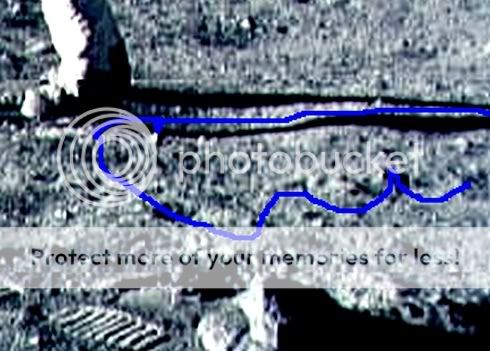It looks like you're using an Ad Blocker.
Please white-list or disable AboveTopSecret.com in your ad-blocking tool.
Thank you.
Some features of ATS will be disabled while you continue to use an ad-blocker.
share:
Thanks for keeping the discussion open.Mars has humanoids like us,and animals,fossils everywhere on the surface from what little is known from landers
and rovers.I have lots of pics posted at ATS of Mars creatures,though some are harder than others to see. Others posted recently some very strong
finds of cliff carvings in rock/dirt/whatever it's made up of 40 ft tall.Mars Opportunity rover captured it last year.Victoria crater. St.Vincent
pics. There's a great find that looks like Egyptian sculptures,and one like a 10 ft African mask. search for my posts vze2xjjk. Here on Earth they
call me Jerry Booooooooooooo  Bill
Nye's best buddy on Mars eyes the sundial on the back of Spirit rover cocking his head like a dog trying to understand its function.Humanoid finds
rover interesting.Viking landers found life 1976,but actually LIFE flocked to the landers(stationary) to investigate them...I mean large animals and
small.I have also posted pics of them elsewhere on ATS.
Bill
Nye's best buddy on Mars eyes the sundial on the back of Spirit rover cocking his head like a dog trying to understand its function.Humanoid finds
rover interesting.Viking landers found life 1976,but actually LIFE flocked to the landers(stationary) to investigate them...I mean large animals and
small.I have also posted pics of them elsewhere on ATS.

We came from Venus, every year the earth gets closer to the sun and at one time venus was where the earth is now and the earth was like mars all these
planets follow the same pattern. The people in control of our lives today know this but you are not supposed to because we are
slaves...................and we will build mars to inhabit their families just like the slaves did the earth and when they are through with the earth
the meek will inherit it. Knowledge from the "ow stop c" book
[edit on 7-7-2008 by seek4 truth]
[edit on 7-7-2008 by seek4 truth]
The Venusian atmosphere has been found to be sufficiently out of equilibrium as to require further investigation.[32] Analysis of data from the Venera, Pioneer and Magellan missions has found the chemicals hydrogen sulfide (H2S) and sulfur dioxide (SO2) together in the upper atmosphere, as well as carbonyl sulfide (OCS). The first two gases react with each other, implying that something must produce them. In addition, carbonyl sulfide is noteworthy for being exceptionally difficult to produce through inorganic means. Were it on Earth, this compound would be considered an "unambiguous indicator of life". Further, it is an often overlooked fact that one of the early Venera probes detected large amounts of chlorine just below the Venusian cloud deck.
It has been proposed that microbes at this level could be soaking up ultraviolet light from the sun as a source of energy, which could be a possible explanation for dark patches seen on UV images of the planet.[34] Large, non-spherical cloud particles have also been detected in the cloud decks. Their composition is still unknown.
Wikipedia
Also if you look at the chart on that page, around a height of 50-55km in the Venusian sky, the conditions are much more "normal" in terms of Earth-like temperature and atmospheric pressure.
in the same way that bacteria have been found living and reproducing in clouds on Earth, it has been proposed that life could exist in the same area on Venus.[8] Microbes in the thick, cloudy atmosphere could be protected from solar radiation by the sulfur compounds in the air.
As for the conspiracy stuff:
That's a great point about how everyone talks about life on Mars and the Moon, two places we know quite a bit about (relatively), and yet no one seems to say anything about Venus - a place which is much more mysterious overall, and one where scientists freely admit life may exist today.
It's like it's no fun for them unless they can scream cover-up - that, and the fact that analyzing actual scientific data is much more boring than searching for rocks that look like things.
Okay, I'm just going to let 'er rip with unabridged speculation, supported by nothing. Ready?
I've always been intrigued by the picture presented to us of Venus..... cloudy planet, no visible features, little apparent interest in surveying it. Why would we? It's uninhabitable, with extreme temperatures. Or is it? Is it enough to say that Terrans would find it impossible to live there, therefore no life could exist?
Also -- and this is waaaaay out on the cracking limb -- the often-times depiction of various EBEs with large dark eyes. Theory 1: They might actually originate from the depths of our own seas, a place where there is little ambient light, and thus the huge light-gathering eyes.
Theory 2: The huge eyes are actually bio-sunglasses to protect their eyes from extreme UV and other solar radiation.
Theory 3: I'm a whackamole and have no business speculating about things for which there is no credible evidence.
Honestly, I'd go with 3. Best Vegas odds.
I've always been intrigued by the picture presented to us of Venus..... cloudy planet, no visible features, little apparent interest in surveying it. Why would we? It's uninhabitable, with extreme temperatures. Or is it? Is it enough to say that Terrans would find it impossible to live there, therefore no life could exist?
Also -- and this is waaaaay out on the cracking limb -- the often-times depiction of various EBEs with large dark eyes. Theory 1: They might actually originate from the depths of our own seas, a place where there is little ambient light, and thus the huge light-gathering eyes.
Theory 2: The huge eyes are actually bio-sunglasses to protect their eyes from extreme UV and other solar radiation.
Theory 3: I'm a whackamole and have no business speculating about things for which there is no credible evidence.
Honestly, I'd go with 3. Best Vegas odds.
reply to post by argentus
You might be more "on-track" than you realize,because other-dimensional beings probably are not so effected by what we experience and wouldn't know hot from cold(possibly),but would know energy levels. In that case there's much energy on Venus for those that have almost no density in our 3D world. Low density beings could exist many places where we would die.

 The Moon,perhaps?
The Moon,perhaps?

You might be more "on-track" than you realize,because other-dimensional beings probably are not so effected by what we experience and wouldn't know hot from cold(possibly),but would know energy levels. In that case there's much energy on Venus for those that have almost no density in our 3D world. Low density beings could exist many places where we would die.




Here are some 1970's Viking small faces to compare with Mars rovers animals.


 The Moon animals pics look Mars style.
The Moon animals pics look Mars style.



reply to post by vze2xjjk
Why don't you stop hijacking the thread with you Mars tomfoolery. In case you didn't really notice - this is about Venus... not Mars. There are plenty of Mars threads here you can post you imaginary Martian friends on.
Back to topic, I believe Venus could have supported life at some point in the past - but whatever there was - if there was - was destroyed by the massive lava flows. All of Venuses crust is approximately the same age.. very strange indeed! Obviously a catastrophic event occurred somewhere it's past!
We still have so much to learn from Venus! What an interesting planet! Great thread (until vze2xjjk tried to mess it up).
IRM
Why don't you stop hijacking the thread with you Mars tomfoolery. In case you didn't really notice - this is about Venus... not Mars. There are plenty of Mars threads here you can post you imaginary Martian friends on.
Back to topic, I believe Venus could have supported life at some point in the past - but whatever there was - if there was - was destroyed by the massive lava flows. All of Venuses crust is approximately the same age.. very strange indeed! Obviously a catastrophic event occurred somewhere it's past!
We still have so much to learn from Venus! What an interesting planet! Great thread (until vze2xjjk tried to mess it up).
IRM
reply to post by vze2xjjk
stop posting this **** on every thread ... make your own and you can post those as more as you want....
About Venus ..... my theory is that Venus will once be able to hold life.
stop posting this **** on every thread ... make your own and you can post those as more as you want....
About Venus ..... my theory is that Venus will once be able to hold life.
I realize the pic supply of VENUS is so limited to perhaps a few Russian pics.The Mars Viking and MOON shots were to add to the approach of the Venus
question,that it's currently thought impossible that the Moon and Venus could harbor life as we know and understand it on the surface.I'm not
absolutely positive about the Moon now. Venus is so much more a limited set of info to work from.I'm asking that people post VENUS pics.
new topics
-
A fix for the Trans players in sports
Social Issues and Civil Unrest: 1 hours ago -
Petition Calling for General Election at 564,016 and rising Fast
Political Issues: 4 hours ago -
Rep. Alexandria O. Cortez Says Forcing People to Use The Correct Bathroom is Dangerous.
US Political Madness: 11 hours ago
top topics
-
France gives Ukraine license to fire long-range missiles at Russia
World War Three: 16 hours ago, 9 flags -
Petition Calling for General Election at 564,016 and rising Fast
Political Issues: 4 hours ago, 9 flags -
Rep. Alexandria O. Cortez Says Forcing People to Use The Correct Bathroom is Dangerous.
US Political Madness: 11 hours ago, 5 flags -
Ok this is some BS now WTH
Rant: 13 hours ago, 4 flags -
A fix for the Trans players in sports
Social Issues and Civil Unrest: 1 hours ago, 4 flags -
Cooperation zones
World War Three: 12 hours ago, 3 flags
active topics
-
A fix for the Trans players in sports
Social Issues and Civil Unrest • 8 • : DAVID64 -
Petition Calling for General Election at 564,016 and rising Fast
Political Issues • 25 • : kountz3r0 -
Results of the use of the Oreshnik missile system in Dnepropetrovsk
World War Three • 177 • : BernnieJGato -
Rep. Alexandria O. Cortez Says Forcing People to Use The Correct Bathroom is Dangerous.
US Political Madness • 24 • : xuenchen -
Post A Funny (T&C Friendly) Pic Part IV: The LOL awakens!
General Chit Chat • 7820 • : underpass61 -
France gives Ukraine license to fire long-range missiles at Russia
World War Three • 26 • : Oldcarpy2 -
Ok this is some BS now WTH
Rant • 9 • : VariedcodeSole -
President-Elect TRUMP Picks Former Florida A.G. PAM BONDI to be U.S. Attorney General.
2024 Elections • 66 • : Xtrozero -
Biden's "Reckless" Decision To Escalate Russia-Ukraine War
World War Three • 126 • : BernnieJGato -
Cooperation zones
World War Three • 15 • : VariedcodeSole
